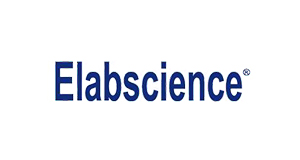Recombinant Human SerpinE1/PAI-1 Protein (His Tag)
Recombinant Human SerpinE1/PAI-1 Protein (His Tag)
Artikelnummer
ELSPDMH100015-20
Verpackungseinheit
20 µg
Hersteller
Elabscience Biotechnology
Verfügbarkeit:
wird geladen...
Preis wird geladen...
Abbreviation: SerpinE1;PAI-1
Target Synonym: Plasminogen Activator Inhibitor 1;PAI;PAI-1;Endothelial Plasminogen Activator Inhibitor;Serpin E1;SERPINE1;PAI1;PLANH1;SERPINE1
Target Species: Human
Expression Host: HEK293 Cells
Fusion Tag: C-His
UNIProt ID: P05121
Background: Serpins are a group of proteins with similar structures that were first identified as a set of proteins able to inhibit proteases. They are the largest and most diverse family of serine protease inhibitors which are involved in a number of fundamental biological processes such as blood coagulation, complement activation, fibrinolysis, angiogenesis, inflammation and tumor suppression and are expressed in a cell-specific manner. Serpin E1 is a secreted protein which belongs to the Serpin family. Serpin E1 acts as 'bait' for tissue plasminogen activator, urokinase, and protein C. Its rapid interaction with TPA may function as a major control point in the regulation of fibrinolysis. Defects in SERPINE1 are characterized by abnormal bleeding due to Serpin E1 defect in the plasma. High concentrations of Serpin E1 have been associated with thrombophilia which is an autosomal dominant disorder in which affected individuals are prone to develop serious spontaneous thrombosis.
Sequence: Val24-Pro402
Purity: > 95 % as determined by reducing SDS-PAGE.
Formulation: Lyophilized from a 0.2 um filtered solution of 20mM PB, 150mM NaCl, pH 7.4.
Normally 5 % - 8 % trehalose, mannitol and 0.01% Tween80 are added as protectants before lyophilization.
Please refer to the specific buffer information in the printed manual.
Endotoxin: < 1.0 EU per ug of the protein as determined by the LAL method.
Target Synonym: Plasminogen Activator Inhibitor 1;PAI;PAI-1;Endothelial Plasminogen Activator Inhibitor;Serpin E1;SERPINE1;PAI1;PLANH1;SERPINE1
Target Species: Human
Expression Host: HEK293 Cells
Fusion Tag: C-His
UNIProt ID: P05121
Background: Serpins are a group of proteins with similar structures that were first identified as a set of proteins able to inhibit proteases. They are the largest and most diverse family of serine protease inhibitors which are involved in a number of fundamental biological processes such as blood coagulation, complement activation, fibrinolysis, angiogenesis, inflammation and tumor suppression and are expressed in a cell-specific manner. Serpin E1 is a secreted protein which belongs to the Serpin family. Serpin E1 acts as 'bait' for tissue plasminogen activator, urokinase, and protein C. Its rapid interaction with TPA may function as a major control point in the regulation of fibrinolysis. Defects in SERPINE1 are characterized by abnormal bleeding due to Serpin E1 defect in the plasma. High concentrations of Serpin E1 have been associated with thrombophilia which is an autosomal dominant disorder in which affected individuals are prone to develop serious spontaneous thrombosis.
Sequence: Val24-Pro402
Purity: > 95 % as determined by reducing SDS-PAGE.
Formulation: Lyophilized from a 0.2 um filtered solution of 20mM PB, 150mM NaCl, pH 7.4.
Normally 5 % - 8 % trehalose, mannitol and 0.01% Tween80 are added as protectants before lyophilization.
Please refer to the specific buffer information in the printed manual.
Endotoxin: < 1.0 EU per ug of the protein as determined by the LAL method.

 English
English










